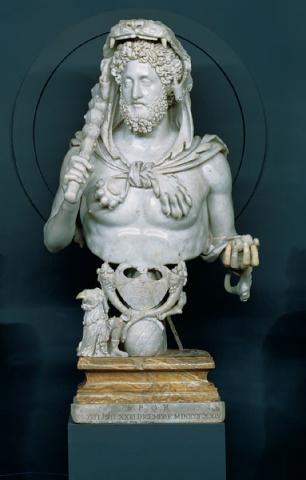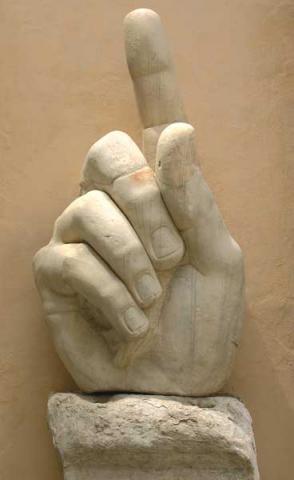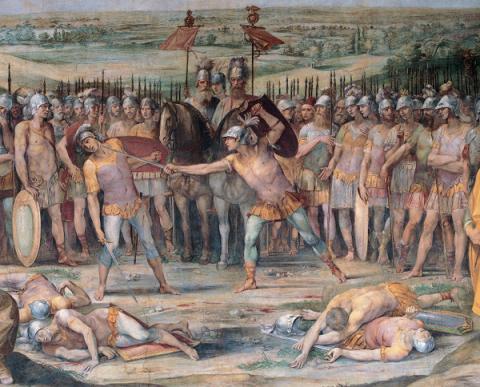Origins
Ancient sources speak of an inhabited settlement founded by Saturnus on the Capitoline hill well before the foundation of Rome itself. It was here that the Greeks came with Heracles, to be followed later by descendants of the Trojans who accompanied Aeneas.
The mythical presence of a settlement on the Capitoline before the date normally associated with the foundation of Rome (753 B.C) has been confirmed by archaeological finds; a number of traces of a more ancient history have been unearthed on the hill.

Sporadic material dating back to between the XIV and VIII centuries BC, found at the foot of the hill in the sacred area of Sant'Omobono, probably originates from a settlement on the southern side of the Capitoline.
Recent excavation in the Roman Garden in the Palazzo dei Conservatori has also brought to light the remains of a protohistoric settlement dating from the middle Bronze Age (XV century BC) to the Iron Age (VII century BC), with inhumation tombs, the remains of what were probably huts and equipment for the working of iron.
A survey carried out within the Tabularium has brought to light a number of assorted fragments of Bronze Age pottery and the remains of what was probably the floor of an VIII century BC hut.
A collection of Archaic votive objects, with miniaturist pottery, small flat impasto cakes and other votive items, was brought to light in 1926-27 in the block between the streets of the Capitoline and Monte Tarpeo and the Vignola steps.













































